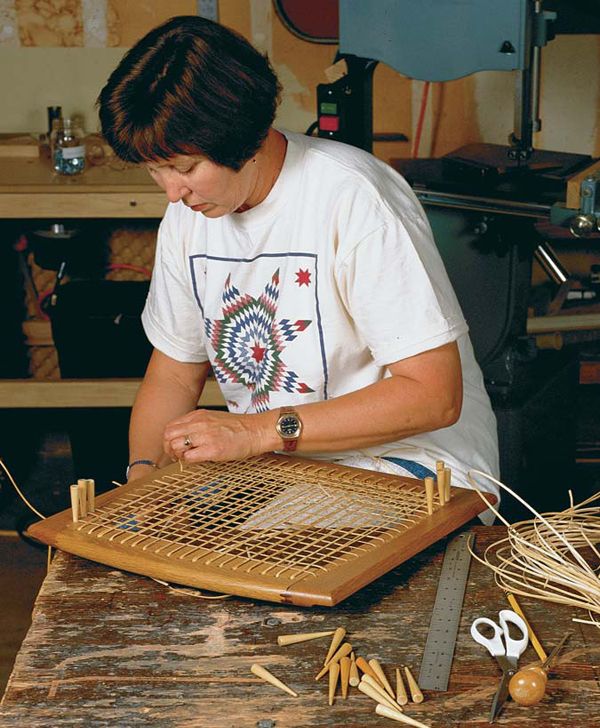How to Weave a Cane Seat
This traditional seat is more comfortable than wood, less expensive than upholstery.

Synopsis: Caned seats are more comfortable than wood seats and less expensive than upholstery. In this article, Judy Warner explains how she caned the seats of stools her husband made. She talks about cane itself, where it grows and how to find it, and the tools needed to work with it. She explains exactly how to prepare the seat for caning and how to do the caning itself. Photos show each step in close detail.
I had two reasons for wanting cane seats on the breakfast-nook stools that my husband had made. First, I love the light, airy pattern of traditionally woven cane, a pattern that’s been around for more than 300 years. Second, I was tired of sitting on the hard wooden seats of the old stools. We’ve been very pleased with the results; the pattern blends well with the contemporary stools, and the firm yet flexible cane is more comfortable than wood and less expensive than upholstery.
Cane and equipment

furniture styles.
Cane for chair seating comes from rattan, a vine-like plant that grows up to 300 ft. in the jungles of Indonesia, China and India. The foliage and outer bark are cut away from the 1-in.-dia. main stem, which is cut into strips to make the cane.
Cane is readily available from several weaving supply stores and is usually sold in metric widths. Cane is supplied in hanks of 500 ft. and 1,000 ft. or in a coil of 250 ft., which is enough for one 12-in.-sq. seat. If this is your first seat, I suggest ordering at least 500 ft. of cane and weaving a practice seat. An easy way to make a practice frame that requires no joinery is to cut it from 3 ⁄4-in.-thick plywood.
Tools needed for the caning job are minimal, and they usually can be obtained from the same source as the cane. You’ll need caning pegs (golf tees also work), an awl, scissors, clothespins and a dish pan to soak and soften the cane. If you’re a beginner, you might want to consider plastic cane. Plastic cane is easier to weave, doesn’t require soaking and holds up to heavy use. Another option is to use prewoven cane panels held in a groove around the seat opening with a reed spline.
Preparing the seat
For a new seat, I lay out and drill holes for the cane based on the look I want. For example, for a light, delicate look, I’ll use narrower, 2mm- to 2.5mm-wide cane (roughly 3 ⁄32 in. wide) and size and space holes according to the chart on the facing page. I chamfer the top and bottom of each hole to ease the stress on the cane as it wraps around the frame. I also lightly chamfer the top inside edge of the seat frame, so the cane doesn’t wear at that point. A rabbet routed around the bottom side of the seat frame helps hide the knots that hold the cane in place, as shown in the photo on the facing page.
From Fine Woodworking #111
For the full article, download the PDF below:
Fine Woodworking Recommended Products

Stanley Powerlock 16-ft. tape measure

Dubuque Clamp Works Bar Clamps - 4 pack

Jorgensen 6 inch Bar Clamp Set, 4 Pack






Log in or create an account to post a comment.
Sign up Log in